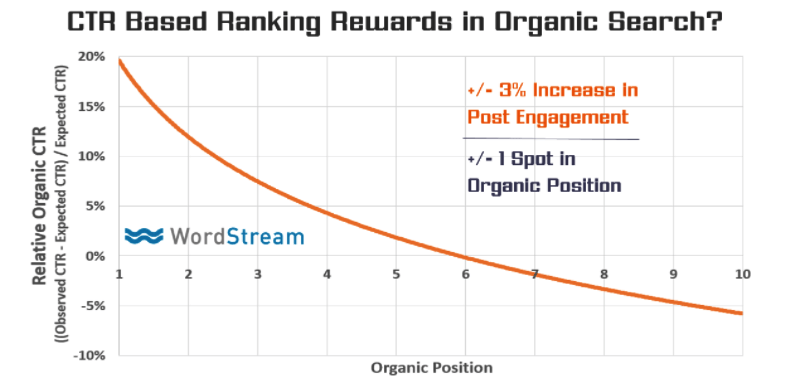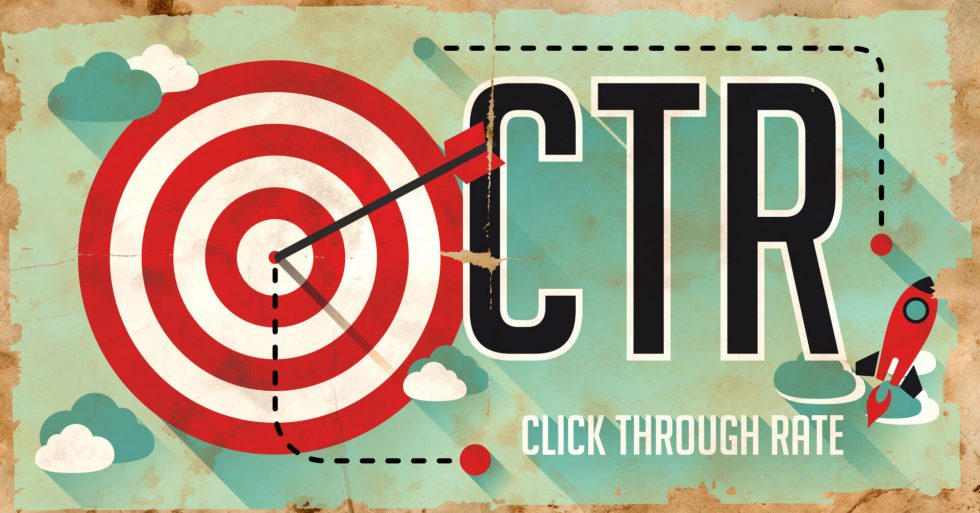Anyone who’s ever even dipped a toe in the performance marketing ocean has heard of CTR. CTR, which stands for “Click-Through Rate”, is a calculation of how many people clicked on an ad (clicks) divided by the number of times the ad was shown (impressions).
So, what is CTR?
Ad Clicks ÷ Ad Impressions = Click-Through Rate
As one of the classic performance marketing metrics, you’re going to be bumping into CTR a lot. But CTR is much more than just a metric. In fact. because advertisers typically pay publishers for every ad click, CTR affects the bottom line for both sides of the advertising partnership.
So, in light of the importance of CTR in your everyday PPC activities, we’ve summarized 7 things you really should know about your CTR. Just by internalizing these points, you’ll go a long way to understanding how CTR works, and what you can do about your CTR to make it better than it is today.
Why is CTR a Key Metric?
Generally speaking, high CTR has been shown to correlate with higher conversion rates. This is probably linked to the fact that if people are clicking on your ad, then there’s something engaging about it. In turn, they’re more likely to be excited by your offering and follow through on your Call to Action. Also, if more people are clicking through, then the engagement rate is higher, the Quality Score improves, the cost per click is lower, and impression share increases too. Good CTR has a ripple effect, creating a whole chain of positive results.
But taken together with your other KPIs, it’s even more powerful
Remember, CTR is a measure of how many people clicked on your ad. It does not reflect the conversion rate on your landing page, such as the number of people who completed a form or contacted your sales rep. Taken by itself, the CTR can tell you how appealing your ad is by how many clicks it generates – but if you are aiming for conversions, not just viewers, then the CTR alone won’t tell you a lot.
For example, if an ad has a very high CTR yet low conversion rate, it is likely a sign that the audience you’re reaching is too broad, or perhaps the ad message is not properly aligned with the landing page. Use your CTR together with other metrics to give you a complete picture.
What’s a “good” Click Through Rate It depends…
What’s considered to be a good CTR varies greatly, and depends upon the platform too. For AdWords paid search, 2% CTR is average and anything above that number is considered good.
However, for Facebook ads, the average CTR is 0.9%. Another variable is the type of industry you are serving. This page has some interesting graphics showing the CTR averages for various categories. The top 3 CTR performers? Dating & Personals, Finance & Insurance, and B2B.
Besides keeping track of your industry’s average, remember – the toughest competitor you face is yourself. Try to beat your record, and focus on achieving a higher CTR in your next campaign than your last.
Does your CTR effects your SEO?
Your ranking on search engines is partly based on how popular your website is, and popularity is measured by page views. The more clicks your page gets – or, in other words, the higher your CTR – then the more valuable the search engine deems it to be. So your page will naturally rank higher. Conclusion? Higher CTR equals better SEO.

It’s all about quality and relevance. Search engines study engagement to determine which pages are best suited to the search query. So make your website the ‘party that everyone wants to attend’, and improve your CTR to boost your SEO.
Better ad copy can go a long way to boosting your CTR
Unless it’s one of the 50% (!) of accidental clicks, a person clicks on your ad because they find it engaging or interesting. High CTR ads succeed in ‘talking’ to the target audience. Conversely, if your ad has a low CTR, you may be able to improve it by working on the ad copy, message, or design, to make it more appealing to your audience. Take a look at your higher-performing ads. What words or phrases do you use? What does the call to action sound like? What stands out about the design? Try to replicate the things that make your ads work, so you can get even better results.
Keywords count – a lot
It’s not just copy that has to be convincing. You’ve got to work on your keywords too. And the key is this: be specific. Here’s an example – suppose you’re a baker targeting people searching for cupcake catering for events. The keyword ‘cupcake’ is very broad, but if you narrow your keyword to ‘special cupcakes catering’, you’ll reach a far more targeted audience. By choosing a focused keyword, you may be sacrificing the number of impressions and clicks, but you’ll likely achieve a higher CTR. This is because your ad is attracting more qualified traffic to begin with. In a nutshell, don’t go keyword crazy – it’s much more CTR-smart to focus on one strong primary keyword or long-tail keyword.
Testing is the way to success
PPC is all about testing what works and what doesn’t. It’s really important to use A/B testing on your ads so you can figure out how to increase your CTR. It might be something as seemingly small as tweaking punctuation, using numbers instead of words, or the way you’ve phrased your call to action. Or perhaps you need an image that is more emotionally resonant. Whatever it is, as soon as your test results are conclusive, make sure to implement the necessary changes to your ads. Then begin the cycle of publishing and testing them again. With a bit of sweat and lots of perseverance, you can optimize your campaigns and send your CTR soaring.
Know your audience
“If you want to improve your CTR, start by truly understanding your audience. Get inside their heads. Think about how they would describe the service or product they’re looking for. Learn their language and use their jargon. Dismiss the things that might seem important to you, but just aren’t to them. This is not as easy as it sounds! It involves a deep understanding of your business, complex number crunching and analysis – but most importantly, it means talking to your customers. Each interaction you have with your customers is a chance to find out more about them. Don’t leave this vital information untapped! Get to know what your ideal customer profile looks like, and make sure you are leveraging it at every opportunity.”
Further reading for successful ecommerce marketing.





